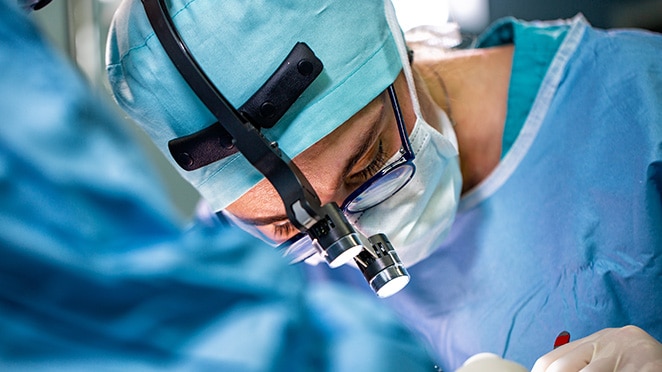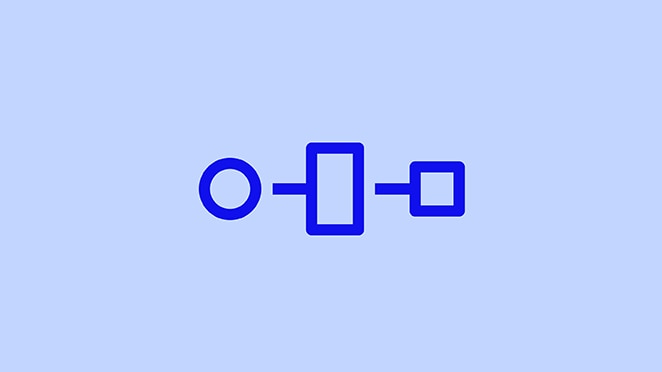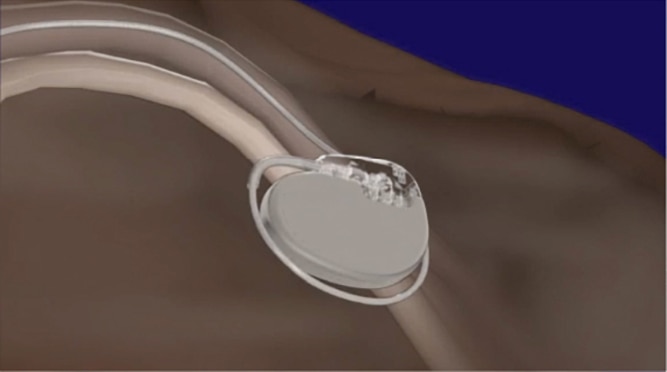For access to personalized education about your Medtronic heart device and monitor, visit MyHeartDevice.Medtronic.com to set up your account.
Pre-diagnosis
-
 Pre-diagnosisSee all answers
Pre-diagnosisSee all answersLearn about heart-related symptoms and testing.
-
 Pre-diagnosis
Pre-diagnosisWhy would someone be referred to an electrophysiologist (EP)?
View answerElectrophysiologists (EP) are seen for electrical problems with the heart. Cardiac EPs are often recommended for patients whose heart rate is faster or slower than a normal pace or irregular instead of consistent.
-
 Pre-diagnosis
Pre-diagnosisWhat is the difference between a cardiologist and electrophysiologist (EP)?
View answerCardiologists are doctors who specialize in the treatment of the cardiovascular system. An electrophysiologist is a cardiologist who specializes in the diagnosis and treatment of heart rhythm disorders.
-
 Pre-diagnosis
Pre-diagnosisWhat is an echocardiograph?
View answerAn echocardiograph or Echo is a type of imaging test for the heart. This test takes a picture of the heart to check if it looks normal.
-
 Pre-diagnosis
Pre-diagnosisWhat is an electrocardiogram (ECG/EKG)?
View answerAn ECG or EKG are interchangeable terms used to describe the recordings and tests that measure the electrical activity of the heart.
-
 Pre-diagnosis
Pre-diagnosisWhat is an electrophysiologist (EP)?
View answerAn EP is a cardiologist who specializes in the diagnosis and treatment of heart rhythm disorders.
-
 Pre-diagnosis
Pre-diagnosisWhat is a cardiologist?
View answerCardiologists are doctors who specialize in the treatment of the cardiovascular system.
-
 Pre-diagnosis
Pre-diagnosisWhat are common symptoms in line with sudden cardiac arrest (SCA)?
View answerSCA symptoms are immediate and dramatic and can include a loss of consciousness, sudden collapse, no breathing, and no pulse. Sometimes other symptoms can occur before a sudden cardiac arrest. These symptoms may include fatigue, fainting, blackouts, dizziness, chest pain, shortness of breath, weakness, palpitations, or vomiting. But sudden cardiac arrest can also occur with no warning.
Consult your doctor with any questions regarding any symptoms you may be experiencing and your medical condition.
-
 Pre-diagnosis
Pre-diagnosisWhy would someone be referred to a cardiologist?
View answerCardiologists are often seen for possible issues with the heart. Seeing a cardiologist is often recommended for those experiencing chest pain, dizziness, and shortness of breath.
-
 Pre-diagnosis
Pre-diagnosisWhat are the atria?
View answerThe atria are the upper chambers of the heart that pump blood to the lower chambers (ventricles).
-
 Pre-diagnosis
Pre-diagnosisWhat is a heart failure specialist?
View answerA heart failure specialist is a cardiologist who specialize in treating heart failure.
Post-diagnosis
-
 Post-diagnosisSee all answers
Post-diagnosisSee all answersLearn about heart-related conditions.
-
 Post-diagnosis
Post-diagnosisWhat does a heart look like during atrial fibrillation (AF)?
View answerAF or AFib is a common type of heart rhythm disorder affecting the atria, the upper chambers of the heart. It occurs when the atria quiver instead of contracting normally. Atrial fibrillation may increase a person's risk for stroke.
-
 Post-diagnosis
Post-diagnosisWhat is supraventricular tachycardia (SVT)?
View answerSVT is as an irregularly fast or erratic heartbeat (arrhythmia) that affects the heart's upper chambers.
-
 Post-diagnosis
Post-diagnosisHow does a heart with tachycardia beat?
View answerTachycardia is a fast heart rate — more than 100 beats per minute while at rest — that can either start in the heart's lower or upper chambers. At these elevated rates, the heart is not able to efficiently pump oxygen-rich blood to the rest of the body.
Talk to a doctor to discuss causes, symptoms, risk factors, and potential treatment options.
-
 Post-diagnosis
Post-diagnosisAre heart palpitations the same as atrial fibrillation?
View answerThe feeling of heart palpitations can be caused by many things. Some palpitations can be a sign of an abnormal heartbeat. One type of abnormal heartbeat is atrial fibrillation, or AFib. Other irregular heartbeats and heart problems can cause heart palpitations. If someone is experiencing palpitations, it is important to have their heart checked.
-
 Post-diagnosis
Post-diagnosisWhat is the difference between a heart rate and a heart rhythm?
View answerA heart rhythm is the pattern of electrical signals going through the heart that causes the heart to beat. A heartbeat is the number of times the heart beats per minute.
-
 Post-diagnosis
Post-diagnosisWhat is ventricular tachycardia (VT)?
View answerA rapid heart rate that starts in the ventricles. During VT, the heart does not have time to fill with enough blood between heartbeats to supply the entire body with sufficient blood. VT can be life threatening if it progresses to ventricular fibrillation.
-
 Post-diagnosis
Post-diagnosisWhat is sinus tachycardia?
View answerSinus tachycardia is a normal increase in heart rate that happens with fever, excitement, and exercise. Sinus tachycardia is normal, but treatment may be required if it is caused by an underlying problem, such as anemia (a low blood count) or hyperthyroidism (overactive thyroid gland), or rarely, happens frequently and without a clear cause (inappropriate sinus tachycardia).
-
 Post-diagnosis
Post-diagnosisDoes atrial fibrillation cause stroke?
View answerStudies show atrial fibrillation, or AFib, and stroke can be related. People who have atrial fibrillation have a higher risk of stroke.
-
 Post-diagnosis
Post-diagnosisWhat are the different types of syncope (fainting)?
View answerThere are several different types of fainting: vasovagal, cardiac, and orthostatic hypotension are the main types of fainting. Search HeartDeviceAnswers.com to learn more about each type of syncope.
-
 Post-diagnosis
Post-diagnosisWhat is sick sinus syndrome (SSS)?
View answerSSS is a group of signs or symptoms that show that the heart's natural electrical pacemaker, the sinus node, is not working properly. With SSS, the heart rate can alternate between slow (bradycardia) and fast (tachycardia), often in combination with atrial fibrillation or atrial flutter. Treatment of SSS may involve a pacemaker and/or medication.
Therapy options
-
 Therapy optionsSee all answers
Therapy optionsSee all answersLearn about related therapy options.
-
 Therapy options
Therapy optionsAre heart devices all the same size and shape?
View answerNo, heart devices come in different shapes and sizes.
-
 Therapy options
Therapy optionsWhat is a defibrillation threshold (DFT) test?
View answerA DFT helps doctors determine how to program heart devices to respond to a life-threatening scenario. During a DFT, the doctor will intentionally put the heart into a fast rhythm, then watch the device deliver therapy to restore proper rhythm.
-
 Therapy options
Therapy optionsHow much energy is in a shock from an implantable cardioverter defibrillator (ICD)?
View answerTypically, an ICD delivers between 20–40 joules per shock. Talk to a doctor or check with the device manufacturer to discuss programming settings that best fit individual needs.
-
 Therapy options
Therapy optionsCan a pacemaker help address shortness of breath?
View answerDepending on a patient's heart condition, a pacemaker may help reduce shortness of breath by helping the heart beat normally. It's important to slowly return to normal activities and to report any issues, like shortness of breath, to the clinic. They may be able to re-program the pacemaker in a way that helps address shortness of breath.
Talk to a doctor about any additional concerns or questions.
-
 Therapy options
Therapy optionsWhy are heart devices recommended by doctors?
View answerThere are multiple reasons why a doctor may prescribe heart device. Often, this is because the heart beats too fast, too slow, or not in synchrony. This can cause people to feel a wide array of symptoms that affect overall health. Talk to a doctor for more information.
-
 Therapy options
Therapy optionsWhat is the difference between DDD and VVI pacing?
View answerThese are different pacing modes your doctor can program for your device. This tells the device how to function when it comes to pacing and sensing. Each letter indicates something different (A = Atrium; V = Ventricle; D = Dual or both A and V; and O = none). The first letter indicates the chamber of the heart being paced. The second letter indicates the chamber of the heart being sensed or monitored. The third letter indicates how the device should respond when it senses a cardiac event (T = Triggered; I = Inhibited; D = Trigger or Inhibit; and O = none). Finally, the fourth letter, usually “R,” means that the rate modulation function in the device is turned on (R = Rate modulation on; O or blank = none or no rate modulation). In this case DDD means both the atrium and ventricle is paced, both the atrium and ventricle are sensed, and the device can trigger or inhibit sensed events. A VVI mode means the pacemaker will pace in the ventricle, sense in the ventricle, and inhibit sensed events.
-
 Therapy options
Therapy optionsWhat is an electrophysiology (EP) study?
View answerAn EP study is a procedure performed in a special lab in the hospital; the study attempts to reproduce an abnormal heart rhythm to diagnose arrhythmias.
-
 Therapy options
Therapy optionsIs there a cure for atrial fibrillation?
View answerThough there is no cure for atrial fibrillation, or AFib, it can be treated. People who have AFib and have received good treatment can have the same life expectancy as people without AFib.
-
 Therapy options
Therapy optionsWhat is an extravascular implantable cardioverter defibrillator (ICD)?
View answerAn extravascular ICD is an implantable cardioverter defibrillator where the device is placed under the skin below the left armpit, and the lead is placed outside the heart and veins.
-
 Therapy options
Therapy optionsWhat are DDD and DDDR?
View answerThese are different pacing modes your doctor can program for your device. This tells the device how to function when it comes to pacing and sensing. Each letter indicates something different (A = Atrium; V = Ventricle; D = Dual or both A and V; and O=none). The first letter indicates the chamber of the heart being paced. The second letter indicates the chamber of the heart being sensed or monitored. The third letter indicates how the device should respond when it senses a cardiac event (T = Triggered; I = Inhibited; D = Trigger or inhibit; and O = none). Finally, the fourth letter, usually “R,” means that the rate modulation function in the device is turned on (R = Rate modulation on; O or blank = none or no rate modulation). In this case DDDR means both the atrium and ventricle is paced, both the atrium and ventricle are sensed, the device can trigger or inhibit sensed events and rate modulation is turned on.
Surgical procedure and recovery
-
 Surgical procedure and recoverySee all answers
Surgical procedure and recoverySee all answersLearn about heart device surgery and recovery.
-
 Surgical procedure and recovery
Surgical procedure and recoveryCan the leads attached to a heart device dislodge?
View answerLead dislodgement doesn't happen often, but it is possible. If a lead dislodges, it typically occurs shortly after implant, and will require the lead to be repositioned.
-
 Surgical procedure and recovery
Surgical procedure and recoveryHow is a lead attached to the heart?
View answerMost cardiac leads are attached to the inside of the heart wall with a small screw. However, there other attachment mechanisms depending on type of lead. Talk to a doctor with further questions on lead attachments.
-
 Surgical procedure and recovery
Surgical procedure and recoveryWill there be pain or numbness at the implant site post-implant?
View answerAfter a heart device is implanted, the implant site may be tender or swollen during recovery. Keep the area clean and watch for any signs of infection.
Consult with a doctor if experiencing any lingering pain or soreness.
-
 Surgical procedure and recovery
Surgical procedure and recoveryAre leads from the previous heart device compatible with the new device?
View answerDepending on an individual's health situations, it is possible to carry over leads from a previously used device into a new one but there are many considerations for this to happen. Talk a doctor, who can advise on individual situations.
-
 Surgical procedure and recovery
Surgical procedure and recoveryWhat happens during the implant surgery?
View answerIn most heart device implants, an incision is made just below the collarbone. Then, leads are inserted and attached to the heart tested to make sure they are working properly. The leads are then connected to the device and everything is placed under the skin prior to closing up the incision and finishing the procedure.
Leadless pacemaker implants start with the insertion of a straw-like catheter system into a vein, typically near the upper thigh area of the leg. The catheter system moves the leadless pacemaker into the right ventricle of the heart where the device is placed against the heart wall and secured with flexible tines. The leadless pacemaker is tested to ensure it is working properly. The catheter system is then removed.
-
 Surgical procedure and recovery
Surgical procedure and recoveryDoes the implant of a heart device hurt?
View answerIt is common to have some soreness and tenderness at the incision site for several days after the procedure. There may also be some bruising. Healing of the incision is usually complete within 7 to 14 days. Because of this, a doctor may place restrictions on certain activities following surgery to allow for complete healing.
Consult with a doctor if experiencing any lingering pain.
-
 Surgical procedure and recovery
Surgical procedure and recoveryHow long does an insertable cardiac monitor (ICM) insertion procedure take?
View answerIf a person is receiving the small type of ICM, or loop recorder, the procedure itself typically takes less than five minutes. However, being prepared for the procedure and waiting for instructions at the hospital can take longer.
-
 Surgical procedure and recovery
Surgical procedure and recoveryWhat are common restrictions for heart device patients after surgery?
View answerHigher intensity activities or movements that can cause strain on the body are cause for restrictions post-implant. Actions that involve pushing, pulling, or lifting heavy objects, exercising, and stretching are advised against for multiple weeks following the procedure. Consult with a doctor to address any questions and to develop a timeline for safely returning to these activities.
-
 Surgical procedure and recovery
Surgical procedure and recoveryWhat happens after device implant?
View answerAfter a heart device is implanted, the doctor may order tests such as an electrocardiogram (ECG), blood tests, or X-rays. These tests confirm that the lead is in the proper position inside the heart. Doctors may also recheck heart device settings to make sure they are providing the best treatment for specific heart conditions.
Following the implant, follow a doctor’s direction on restrictions and timelines to resuming normal activities.
-
 Surgical procedure and recovery
Surgical procedure and recoveryHow are leads from a heart device removed?
View answerLeads are typically not removed in most device replacement procedures as there are potential risks and complications. However, a doctor may recommend this for specific cases. If a doctor decides to remove leads, they will discuss why this procedure is necessary prior to performing it.
Everyday living
-
 Everyday livingSee all answers
Everyday livingSee all answersLearn about living with a heart device.
-
 Everyday living
Everyday livingDoes it hurt to receive a shock from an implantable cardioverter defibrillator (ICD)?
View answerThe sensation will differ for each individual patient. A shock from an ICD can feel like a sharp or quick thump to the chest. The muscles in your chest and upper arm may tighten so strongly that you jump up in surprise. Try not to worry if this happens, remember that a defibrillating shock from an ICD can be lifesaving. If there is any pain caused by a shock, it often passes quickly. Anyone touching you at the time you get the shock may feel a muscle spasm or a tingle. It will not hurt the person touching you. Any questions on what to expect in the event of a shock should be directed to your doctor.
-
 Everyday living
Everyday livingHow will an implantable cardioverter defibrillator (ICD) patient know if they get shocked?
View answerMost people who have received an ICD shock describe the event in a unique manner. It is normal to feel apprehensive, but also remember that a defibrillating shock from an ICD can be lifesaving. For most people, if there is pain, it quickly passes.
-
 Everyday living
Everyday livingCan security devices that are located at entrances to stores, libraries, and other public facilities affect heart devices?
View answerThese systems should not affect your heart device. However, as a precaution, do not linger near or lean against such systems. Walk through these systems at a normal pace. If you are near such a system and experience symptoms, promptly move away from the system. After you move away, the heart device resumes its previous state of operation.
-
 Everyday living
Everyday livingAre there any medications that heart device patients should not take?
View answerTalk to a doctor about any questions or concerns regarding medications.
-
 Everyday living
Everyday livingWould someone with a heart device feel any symptoms if something was interfering with the device?
View answerThere are potential symptoms to identify something is interfering with a heart device, like shortness of breath, dizziness, sudden weakness, fluttering in the chest, lightheadedness, fainting, or possibly an inappropriate shock. Generally, moving away from the item that is causing the interference will resolve the issue. Talk to a doctor to discuss further.
-
 Everyday living
Everyday livingWhat do the alerts from a heart device sound like?
View answerSome heart devices have alert tones or vibrations and others do not. Typically, only an implantable cardioverter defibrillator (ICD) makes noise or vibrates, but some newer pacemakers have audible alerts. Talk to a doctor to learn more about individual devices and the possible tones they could emit.
-
 Everyday living
Everyday livingHow does the heart function?
View answerThe heart is roughly the size of a fist and sits in the middle of the chest, slightly to the left. Each day, the heart beats approximately 100,000 times and is the center of the circulation system, pumping blood throughout the body. This blood delivers oxygen and nutrients to all parts of the body to help organs and muscles work properly.
-
 Everyday living
Everyday livingCan someone with a heart device weld?
View answerWelding with a heart device requires several precautions in place before participating:
- Limit welding to currents less than 160 amps.
- Work in a dry area and wear dry gloves and shoes.
- Maintain a 24 in (60 cm) distance between the welding arc and heart device.
- Place the welding unit approximately 60 in (152 cm) away from the work area.
- Keep the welding cables close together and as far away from the heart device as possible.
- Connect the ground clamp to the metal as close to the point of welding as possible.
- Arrange the work so the handle and rod will not contact the metal being welded if they are accidentally dropped.
- Wait several seconds between attempts when having difficulty starting a weld.
- Work in an area that offers firm footing and plenty of room for movement.
- Immediately stop welding and step away from the area if feeling lightheaded, dizzy, or experiencing other symptoms.
- Work with an informed person who understands these suggestions.
Note: Aprons or vests will not effectively shield the heart device from the electromagnetic energy generated by welding equipment.
Discuss with a doctor prior to welding to ensure safe use.
-
 Everyday living
Everyday livingCan someone with a heart device go in a hot tub?
View answerHeat and humidity do not interfere with heart devices, but hot tubs may affect people with certain medical conditions. Discuss this with a doctor.
-
 Everyday living
Everyday livingCan someone with a heart device go on a roller coaster?
View answerA roller coaster won't affect an implanted heart device but check with a doctor to make sure there are no heart conditions that prevent riding. A roller coaster may have shoulder bars that can rest uncomfortably on a device. Items such as additional padding, an extra shirt, or towel can be used to protect the devices in these cases from rough, physical contact to the implant site.
Additionally, keep a heart device at least 6 in (15 cm) away from any magnetic components.